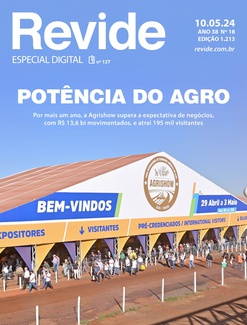
Dry spell necessitates plan for a crisis
by Marcos Fava Neves, special to China Daily (15/08/12)
The US is experiencing its most severe drought in the past 50 years. At this moment, about 37 percent of its farms and 43 percent of its agricultural areas are facing water restrictions. For some crops, such as corn, the damage is already established even if rain returns.
The US is the largest grain producer in the world, and the effects of this drought, if it continues, may be serious.
In India, the monsoon this year is delivering less water than needed, which may reduce the production of sugar cane and some other crops. We must recognize that India is becoming a large food consumer due to its economic growth.
In this article, I am sharing my thoughts about the possible impacts of the droughts. These impacts may be classified as primary, which are the ones that happen immediately after the news of the drought; or secondary, which are the impacts not felt immediately, but as a consequence of a behavioral change that may occur in the following planting season as well as in research, governance and institutional environment.
1. The prices of soybean and corn might go up and pull other grains with them.
2. Depending on the amount of stock used to guarantee supply, reserves of these commodities will be lowered to a dangerous level, which may signal higher prices for commodities for more than just the next crop as stocks are rebuilt to a safe level.
3. Higher prices have terrible effects on less-developed countries that need to import these grains for their population's food requirements. High food prices are also directly related to political instability.
4. Countries with large middle-income populations will also be affected, since the amount spent on importing food will be much higher, which might happen to China.
5. With higher grain prices, the cost of feed for the pork, poultry, cattle, fish and other industries increases. In turn, their margins may fall dramatically, since passing costs on to supermarkets is not automatic. Meat will be one of the most threatened industries.
6. The biofuel industry will be similarly affected. Since the prices of the raw materials used to produce them (such as corn) are higher, margins may be reduced, threatening the industry. In addition, prices will be transferred to the final consumers of biofuels, reducing the economic benefits of biofuel use and making some consumers switch back to oil.
7. Food prices will rise in supermarkets and supply chains will be pressured to cut costs, affecting industries such as advertising and packaging.
8. Since food is the last item to be cut when a family faces income restrictions, this price increase will also hit other industries, because part of the family budget will be shifted towards food (away from entertainment and other industries).
9. Farmers not affected by the droughts will have significantly higher margins, making it possible to buy more land and invest in technology. This may lead to more concentration at the farming level, particularly in the southern hemisphere.
10. Mandatory biofuel programs will be threatened in some countries, particularly in the US. There might be pressure to reduce the mandates in order to use more of the grains for food. If this happens, these industries will lose markets and sales, which will be difficult to recover in the coming years. It is a short-term view, but a risk.
11. If some countries switch back from biofuels to oil (petrol), consumption will grow, putting pressure on oil prices. This will also increase production and transportation costs for food chains, since a lot of oil is used in transport.
12. The reversion to oil will bring more pollution from transport systems' carbon emissions.
13. An increase in food prices may shift some consumption from outside food towards home-prepared food, switching marketing channels from restaurants to supermarkets.
14. There will be an incentive for the southern hemisphere to produce more soybeans and corn, replacing land used for cotton, wheat, cane and sunflowers. As their production will decrease, we may expect higher prices for these products.
15. Better prices will allow farmers to use more fertilizers, chemicals and technology. This will increase productivity, which may help to replenish commodity stocks.
16. Insurance companies and systems will be in line to cover production losses due to the drought. The discussion over who will pay the bill and what percentage of it will be split between the government (mostly in the US) and insurance companies is still going on.
17. India's reduced cane production may raise sugar prices, since the country will probably need to import sugar.
18. Higher food prices may stimulate programs to reduce food waste. A lot of food is lost within the food chain, and price pressure may bring positive externalities for the future.
19. There might be economical effects from trade deficits and surpluses in several countries, affecting their GDP and even their currency-exchange rates. We may expect many more regulations over food trade in several countries (including export quotas and production incentives). We may also expect political tensions over scarce water resources.
20. We could also see more pressure on seed, chemical and genetics companies to produce plants resistant to drought. Should this technology come from only one supplier, we will have more concentration in seed markets.
These are some of the impacts that may happen due to the severe droughts. Some researchers recently addressed the notion that these droughts may become more common in the future, which will pressure other countries to be developed for food production.
We must also recognize that these droughts are coming at a time when food consumption is growing internationally. We will need to increase production and productivity faster than we expected.
In addition, the risks in food-production chains are increasing, making their planning more difficult and bringing the food crisis to the discussion table.
From this list, we can see that the drought will have several consequences. This framework may open our minds for discussions on the topic and help us to anticipate future situations at the private and public level.
The author is professor of strategic planning and food chains at the School of Economics and Business, University of Sao Paulo, Brazil (www.favaneves.org). The views do not necessarily reflect those of China Daily US Edition.

